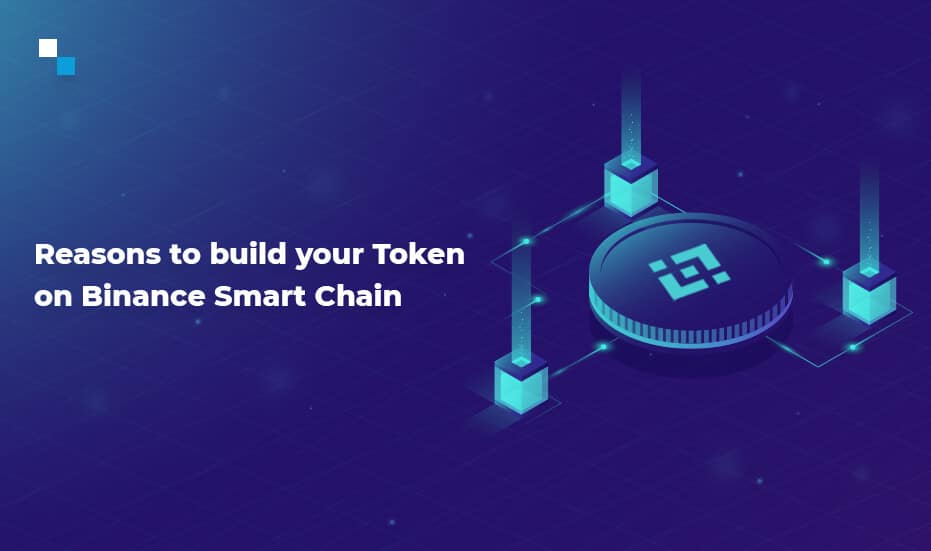
5 Steps on How to Make a Non Fungible Token
June 24, 2021
Break Through The Gaming Market With Ethereum dApp Games Development
July 1, 2021Binance introduced Binance Chain to provide users with a blockchain that is reliable and supports faster transactions. However, it was not designed to support the development of decentralized apps (dApps). To support the same, Binance Smart Chain was launched which comes with programmable smart contracts and Binance Smart Chain token. Now, BSC stands as a strong competitor in the space of dApp development frameworks.
Binance Smart Chain -The hub for dApps
Over the last year, token development on BSC and dApp development have seen a massive uptick. That’s because Binance Smart Chain was designed as a parallel blockchain to Binance Chain and is fully compatible with Ethereum. Due to this compatibility, the dApp and token development on BSC was accelerated.
With the dual-chain ecosystem, Binance was able to:
1) Protect Binance Chain’s high performance.
2) Provide its ecosystem users with smart contract programmability.
Each dApp developed on Binance Smart Chain comes with a tradable asset called a BEP-20 token that has some utility which could be economic-related or governance-related. Furthermore, both the chains are interoperable so that BEP-2 and BEP-20 tokens can be traded across chains. When you create token BEP-20, you will realize that it is an extension of BEP-2 and both the token standards are similar to ERC-20.
BEP-20 in detail
BEP-20 standard is an extension of the ERC-20 token standard that defines the framework and a set of rules that the tokens developed on BSC must follow. Interestingly, the BEP-20 token standard can be used to create tokenized securities and stablecoins. Also, it is used to create what is known as Peggy Coins. These are the BEP-20 tokens that are backed by crypto assets like BTC, LINK, and more.
What does the standard specify?
The BEP-20 standard requires developers to define the following parameters:
Burn — Token burn means a fixed number of tokens that are removed from the circulating supply. Because of this, the token becomes deflationary in nature.
Mint — Token mint means new BEP-20 tokens that are added to the total circulating supply over time. This makes the token inflationary in nature.
Pause — This parameter helps protect the tokens in case of a malicious attack on the dApp. If an attack is identified, the creator of the token can choose to pause all the associated activities related to the tokens.
Blacklist — When a specific user is identified as a malicious element, the token creator can backlist the address of the user.
Once all of the parameters are set, the token generation is completed, and as a creator of the token, you will have complete ownership.
BEP-20 vs ERC-20
1) BEP-20 and ERC-20 are two complementary standards of Binance Smart Chain and Ethereum token.
2) A look at BEP-20 reveals it is an extended version of the ERC-20 standard and is used to define parameters like token issuance, token transfer, and ownership.
3) Using the Binance Bridge, the interoperability between the BSC and Ethereum and TRON has been established.
4) Using the Binance Bridge, the native crypto assets can be converted into BEP-2 and BEP-20 tokens.
5) Interestingly, Binance Bridge charges no conversion fees. As a result, the users only end up paying the network fees and no conversion fees.
The process to create token BEP-20 is simple. Additionally, native blockchain tokens like ERC-20 and TRC-20 can be easily converted into BEP-20. The process is known as Peg-in and the opposite is known as Peg-out.
BEP-20 vs. BEP-2
BEP-20 and BEP-2 are two completely compatible token standards. Interestingly, both BEP-20 and BEP-2 tokens are fuelled by BNB which is the native token of both Binance Chain and BSC.
1) As BSC is an extension of the Binance Chain, they are fully interoperable with each other.
2) As a result, BEP-20 tokens from BSC can easily be swapped with BEP-2 on Binance Chain.
3) Even though the BEP-2 and BEP-20 tokens are interoperable, you cannot use the BEP-2 token while using a dApp on BSC.
4) It is the same Binance Bridge that provides cross-chain liquidity between the Binance Chain and Binance Smart Chain.
Wrapping it up
The Binance ecosystem has helped expand DeFi usability by bridging the gap between Binance Chain, Binance Smart Chain, and Ethereum. While Binance Chain enables high-speed transactions at very low fees, Binance Smart Chain enables programmability using smart contracts.
It’s a very exciting time to tap into Binance Smart Chain token development because the DeFi growth has just started. This is where Antier Solutions can help you. We have a team of over 200 blockchain developers who can provide you with end-to-end support for token development on BSC.
Come to us with an idea and we will give shape to it with our expertise.
Connect with our subject matter experts to share your business needs.



